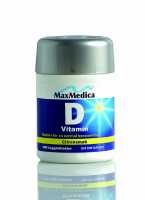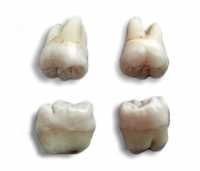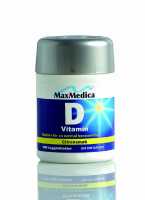NEJM: Does Antenatal Vitamin D Prevent Childhood Asthma?
Vitamin D, With and Without Calcium, for the Prevention of Fracture
- (i) observational studies of risks of fracture associated with prolonged differences in blood concentrations of 25(OH)D;
- (ii) randomised trials of vitamin D alone versus placebo or no treatment for prevention of fracture; and
- (iii) randomised trials of calcium and vitamin D versus placebo or no treatment for prevention of fracture.In addition, we reviewed the design of the ongoing randomised trials assessing the effects of higher doses of vitamin D alone or in combination with calcium for prevention of fracture.
Low Vitamin D in Childhood Associated with Behavioral Problems in Adolescence
Vitamin D Supplements During Pregnancy Linked to Decreased Tooth Enamel Defects in Children
Does Vitamin D Supplementation Impact Relapse-Free Survival in GI Cancers?
High-Dose Vitamin D During Pregnancy Did Not Reduce Risk of Childhood Asthma
Vitamin D May Speed Recovery From Resistant Tuberculosis
Does Treatment with Vitamin D Reduce Cardiovascular Risk in Hemodialysis Patients?
MedicalResearch.comInterview with:

Tetsuo Shoji, MD, PhD.
Department of Vascular Medicine
Osaka City University Graduate School of Medicine
Osaka Japan
MedicalResearch.com: What is the background for this study? What are the main findings?
Response: Vitamin D is known to be associated with health and disease of various organs such as bone, heart, brain, and others. Vitamin D is activated by the liver and kidneys to a hormone called 1,25-dihydroxyvitamin D which binds to vitamin D receptor in cells to exert its functions.
Vitamin D activation is severely impaired in patients with kidney disease requiring hemodialysis therapy, leading to mineral and bone disorder(MBD). Therefore, active form of vitamin D is one of the standard choices of treatment for MBD caused by kidney function loss.
Previous observational cohort studies showed that the use of active vitamin D in hemodialysis patients was associated with lower likelihood of all-cause death, cardiovascular death, and incident cardiovascular disease.Potentially cardio-protective effects of active vitamin D were shown by basic studies using cultured cells and animal models. Then, many nephrologists began to believe that active vitamin D is a “longevity hormone” or a “panacea” for kidney patients requiring dialysis therapy, although there was no evidence by randomized clinical trials.
To show evidence for it, we conducted a randomized clinical trial namedJ-DAVID in which 976 hemodialysis patients were randomly assigned to treatment with oral alfacalcidol or treatment without active vitamin D, and they were followed-up for new cardiovascular events during the four-year period. The risk of cardiovascular events was not significantly different between the two groups. The risk of all-cause death was not significantly different either.
To our surprise, the risk of cardiovascular event tended to be higher in the patients who continued treatment with active vitamin D than those who continued non-use of active vitamin D, although the difference was not statistically significant.

MedicalResearch.comInterview with:
Professor John McGrath
Niels Bohr Professor
National Centre for Register-based Research
Aarhus University
Queensland Brain Institute
University of Queensland
Brisbane AustraliaQueensland Centre for Mental Health Research
The Park Centre for Mental Health Australia
MedicalResearch.com: What is the background for this study?
What are the main findings?
Response: We know that people born in winter and spring have an increased risk of later developing schizophrenia. But, we were not sure why. We know that vitaminD, the sunshine hormone, is more likely to be low in winter and spring, so wedeveloped a way to test for vitamin D in stored neonatal blood sample.
(more…)Study Finds Vitamin D Supplements Have No Effect On Musculoskeletal Health
 Dr Mark J Bolland PhD
Bone and Joint Research Group
Department of Medicine
University of Auckland
New Zealand
MedicalResearch.com: What is the background for this study?
Response: Vitamin D supplements have long been recommended for older people to treat or prevent osteoporosis.
Early evidence suggested vitamin D supplements might have benefits for musculoskeletal health, but more recent systematic reviews have reported no effect of vitamin D supplementation on fractures, falls or bone mineral density. Some authors have suggested that inadequate vitamin D doses might explain these null results.
(more…)
Dr Mark J Bolland PhD
Bone and Joint Research Group
Department of Medicine
University of Auckland
New Zealand
MedicalResearch.com: What is the background for this study?
Response: Vitamin D supplements have long been recommended for older people to treat or prevent osteoporosis.
Early evidence suggested vitamin D supplements might have benefits for musculoskeletal health, but more recent systematic reviews have reported no effect of vitamin D supplementation on fractures, falls or bone mineral density. Some authors have suggested that inadequate vitamin D doses might explain these null results.
(more…)Vitamin D and Colorectal Cancer Risk – What is the Correlation?
Higher Vitamin D Levels Linked to Lower Breast Cancer Incidence
Severely Malnourished Children May Benefit From Vitamin D Supplement
How To Prevent the Elderly From Falling?
Vitamin D and Calcium Supplements Did Not Lower Fracture Risk In Community-Dwelling Adults
 Dr Jia-Guo Zhao
Tianjin Hospital
Department of Orthopaedic Surgery
Tianjin, China
MedicalResearch.com: What is the background for this study?
Response: The increased social and economic burdens for osteoporotic-related fractures worldwide make its prevention a major public health goal.
Calcium and vitamin D supplements have long been considered a basic intervention for the treatment and prevention of osteoporosis. Survey analysis showed that 30–50% of older people take calcium or vitamin D supplements in some developed countries. Many previously published meta-analyses, from the high-ranking medical journals, concluded that calcium and vitamin D supplements reduce the incidence of fracture in older adults. And many guidelines regarding osteoporosis recommend calcium and vitamin D supplements for older people. The final aim for these supplements is to prevent the incidence of osteoporotic-related fracture in osteoporosis management.
(more…)
Dr Jia-Guo Zhao
Tianjin Hospital
Department of Orthopaedic Surgery
Tianjin, China
MedicalResearch.com: What is the background for this study?
Response: The increased social and economic burdens for osteoporotic-related fractures worldwide make its prevention a major public health goal.
Calcium and vitamin D supplements have long been considered a basic intervention for the treatment and prevention of osteoporosis. Survey analysis showed that 30–50% of older people take calcium or vitamin D supplements in some developed countries. Many previously published meta-analyses, from the high-ranking medical journals, concluded that calcium and vitamin D supplements reduce the incidence of fracture in older adults. And many guidelines regarding osteoporosis recommend calcium and vitamin D supplements for older people. The final aim for these supplements is to prevent the incidence of osteoporotic-related fracture in osteoporosis management.
(more…)Vitamin D May Have a Role In Reducing Risk of Severe Asthma Attacks
High Dose Vitamin D No Advantage In Preventing Pediatric Viral Infections
Vitamin D Supplements Will Probably Not Help Asthma or Atopic Dermatitis
Monthly Doses of Vitamin D Do Not Prevent Cardiovascular Disease
Effect of Vitamin D and Calcium Supplementation on Cancer Incidence in Older Women
- Numerous observational studies show that higher vitamin D intake and serum 25, hydroxyvitamin D [25(OH)D], the functional indicator of vitamin D status, are associated with lower incidence of cancer.
- However, the scientific fields consider randomized clinical trials (RCT) as a gold standard for testing new interventions for prevention and treatment of disease. In the only RCT of cancer and vitamin D to date with cancer as a primary outcome, the Women’s Health Initiative, postmenopausal women randomly assigned to vitamin D3400 IU/day and calcium 1000 mg/day showed no difference from those assigned to placebo in colorectal cancer incidence. One criticism of that study was that the vitamin D intervention was low, only 400 international units (IU) per day.
- In our study we found that, in healthy women ages 55 and older with a mean baseline serum 25(OH)D of 33 ng/mL, supplementation with 2000 IU/day of vitamin D3and 1500 mg/day of calcium for four years, compared with placebo, decreased all-type cancer incidence by about 30%, but this did not reach statistical significance. (p value =0.057 and for statistical significance, the p value would need to be less than 0.05.)
- In a secondary analysis, we re-analyzed the data excluding cancers that developed during the first year of study and were likely present but not diagnosed upon study enrollment. The findings here were that vitamin D and calcium did significantly decrease cancer risk by about 35%.
- In another secondary analyses, we combined all of the serum 25(OH)D values to determine if higher levels were associated with lower cancer incidence. Here, higher serum 25(OH)D was significantly associated with lower cancer incidence. Persons with serum 25(OH)D of 55 ng/mL had a 35% lower risk of cancer than persons with serum 25(OH)D of 30 ng/mL. This is especially interesting since current recommendations for sufficient serum 25(OH)D levels are 20 ng/mL (the National Academy of Medicine) and 30 ng/mL (the Endocrine Society).
- Note that serum 25(OH)D is a better predictor of cancer development than assigning persons to supplement groups. Serum 25(OH)D takes into account poor compliance of the active supplement group with taking supplements, personal use of supplements by the placebo group, dietary vitamin D intake, sunlight exposure, and the variation among persons in absorption and metabolism of the vitamin D supplement.











